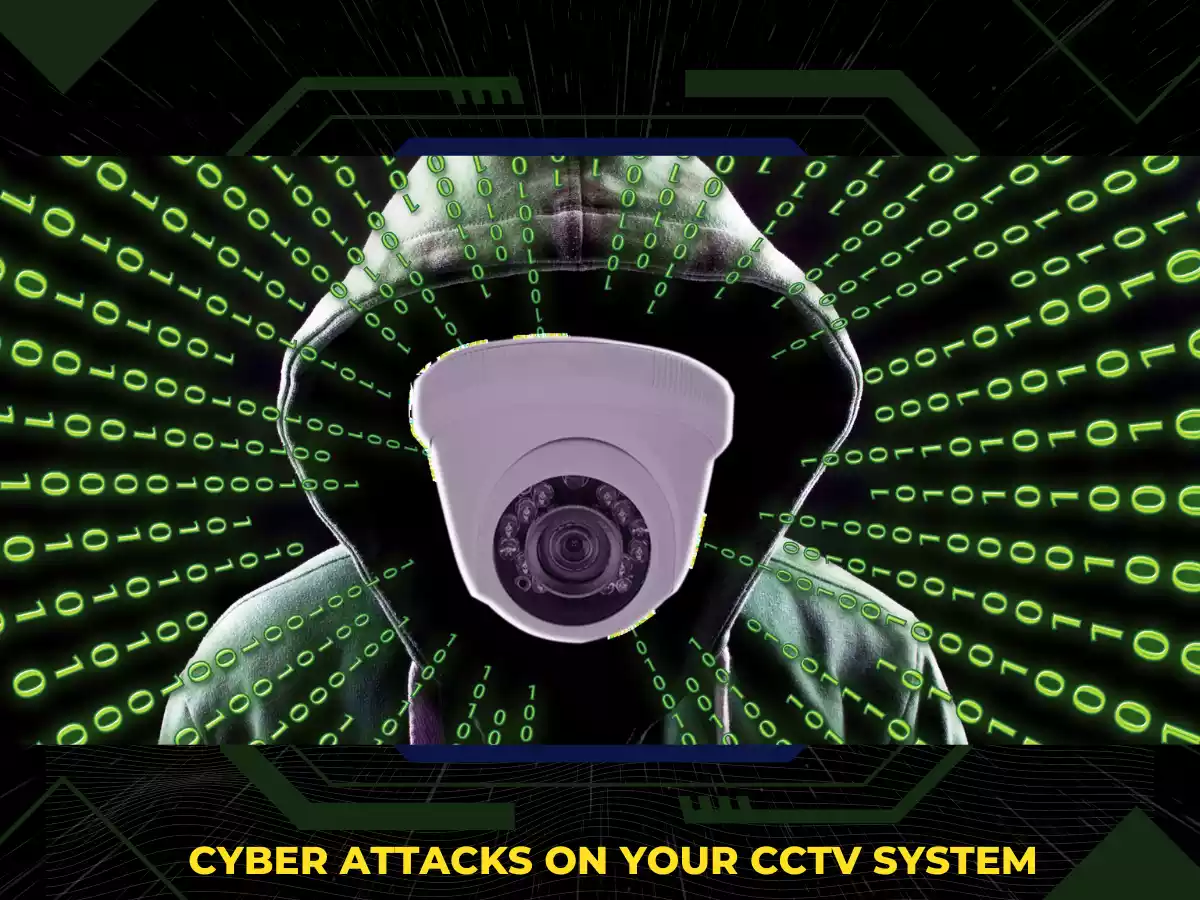Table of Contents
ToggleHow to prevent cyber attacks on your CCTV system
The importance of preventing cyber attacks on CCTV systems
CCTV systems have become increasingly popular as a means of protecting homes and businesses from physical threats. However, with the advent of internet connectivity and the rise of cyber crime, CCTV systems have also become vulnerable to cyber attacks. Cyber attackers can exploit security weaknesses in CCTV systems to gain unauthorized access to sensitive data, such as live video footage or recorded footage.
A cyber attack on a CCTV system can have serious consequences, such as loss of data, privacy violations, and even physical harm if the attacker gains control of the system to disable or manipulate cameras. Cyber attacks can also cause financial losses if the attacker demands a ransom to release control of the system or if the business suffers reputation damage due to a security breach. Therefore, it is essential to prevent cyber attacks on CCTV systems to ensure the safety and security of the business and its assets.
Common Cyber Attacks on CCTV Security Systems
There are several types of cyber attacks that can target CCTV systems. Here are some of the most common ones:
Password attacks
Attackers can use automated tools to guess weak passwords or exploit default credentials on CCTV systems, which are often left unchanged by users. Once they gain access to the system, they can modify settings, view live or recorded footage, or even add new cameras to the system.
Malware attacks
Malware, such as viruses or Trojans, can infect CCTV systems through email attachments, downloads, or USB drives. Once the malware is installed on the system, it can steal data, install backdoors for remote access, or launch DDoS attacks to overwhelm the system.
Man-in-the-middle attacks
Attackers can intercept the communication between the CCTV system and the network, allowing them to eavesdrop on data traffic or manipulate data, such as altering video footage or stealing login credentials.
Physical attacks
Physical access to the CCTV system can also lead to cyber attacks if the attacker gains access to the system’s hardware or software components. This can be done through theft or unauthorized access to the premises where the system is located.
To prevent these types of cyber attacks on CCTV systems, it is important to take proactive security measures to secure the system and minimize vulnerabilities.
How cyber attackers gain access to CCTV systems
Cyber attackers can gain access to CCTV systems in a variety of ways. Some common methods include:
Exploiting vulnerabilities: CCTV systems may have unpatched vulnerabilities that attackers can exploit to gain access. These vulnerabilities may be in the system’s firmware, software, or operating system.
Default credentials: Many CCTV systems come with default login credentials that are easy to guess or widely known. Attackers can use these credentials to gain access to the system.
Social engineering: Attackers may use social engineering techniques, such as phishing emails or phone calls, to trick users into revealing login credentials or downloading malware onto the system.
Physical access: Attackers may gain physical access to the CCTV system, either by stealing the system or by gaining unauthorized access to the building where the system is located.
Once attackers gain access to the CCTV system, they can then manipulate the system, steal data, or install malware to gain ongoing access. To prevent these types of attacks, it is important to take proactive measures to secure the system and limit potential vulnerabilities.
Tips for Preventing Cyber Attacks on Your CCTV System
Here are some tips for preventing cyber attacks on your CCTV system:
Use strong passwords: Ensure that all login credentials are strong, unique, and complex. Use a combination of upper and lower case letters, numbers, and special characters.
Change default login credentials: Change all default login credentials for your CCTV system to reduce the risk of attackers using known login details.
Update firmware and software: Regularly check for firmware and software updates for your CCTV system and apply them as soon as possible. This can help address known vulnerabilities and improve the overall security of the system.
Use firewalls: Implement firewalls to protect your CCTV system from unauthorized access. Firewalls act as a barrier between the system and the outside world and can prevent attackers from accessing the system.
Enable encryption: Enable encryption for data transmitted to and from the CCTV system to ensure that data is protected from interception and tampering.
Restrict access: Limit access to the CCTV system to only authorized personnel. This can be achieved by implementing strong access controls, such as multi-factor authentication, and regularly reviewing access privileges.
Regularly monitor the system: Regularly monitor the CCTV system for suspicious activity, such as failed login attempts or unauthorized access attempts. This can help identify potential attacks early on and allow for a timely response.
By implementing these measures, you can significantly reduce the risk of cyber attacks on your CCTV system and better protect your business and its assets.
Implementing access control and user permissions
Implementing access control and user permissions is an important measure for preventing cyber attacks on your CCTV system. It involves controlling who can access your CCTV system and what actions they can perform once they are granted access. Here are some tips on implementing access control and user permissions:
Restrict access to the CCTV system
Limit access to the CCTV system to authorized personnel only. This can be achieved by implementing strong authentication mechanisms such as passwords, biometrics, or multi-factor authentication.
Create user accounts with specific permissions
Create user accounts with specific permissions for each user based on their roles and responsibilities. For example, a security guard may only need to view live footage, while an administrator may need access to all functions.
Set password policies
Establish password policies that require strong passwords and periodic password changes. Also, ensure that users do not share passwords and that passwords are not stored in plain text.
Monitor user activity
Monitor user activity and audit logs to detect any suspicious activity, such as attempts to access unauthorized areas or download large amounts of data.
Regularly review and update access permissions
Regularly review and update access permissions to ensure that only authorized users have access to the CCTV system.
By implementing access control and user permissions, you can significantly reduce the risk of unauthorized access to your CCTV system and prevent cyber attacks.
Monitoring and logging system activity
Monitoring and logging system activity is another important measure for preventing cyber attacks on CCTV systems. By monitoring the system activity, you can detect any unusual or suspicious behavior and take appropriate action before any harm is done.
To effectively monitor and log system activity, it is important to implement a security information and event management (SIEM) solution. SIEM solutions are designed to collect, analyze, and correlate security events from various sources in real-time, enabling you to quickly identify and respond to any potential security threats.
In addition to SIEM, it is also important to implement a centralized logging solution. Centralized logging involves aggregating logs from all devices and applications in the CCTV system and storing them in a central location. This enables you to easily search and analyze logs for any suspicious activity, such as failed login attempts or unauthorized access attempts.
By regularly monitoring and logging system activity, you can quickly detect and respond to any security incidents, minimizing the risk of a successful cyber attack on your CCTV system.
Implementing intrusion detection and prevention systems
Another advanced measure for preventing cyber attacks on CCTV systems is implementing intrusion detection and prevention systems (IDPS). An IDPS is a security solution that monitors network traffic and system activity to detect and prevent unauthorized access or malicious activity.
There are two types of IDPS: network-based IDPS and host-based IDPS. Network-based IDPS monitors network traffic to detect and prevent attacks such as denial-of-service (DoS) attacks, port scanning, and protocol-based attacks. Host-based IDPS, on the other hand, monitors the activity of individual systems to detect attacks such as file tampering, privilege escalation, and rootkit installation.
By implementing IDPS, you can quickly detect and respond to any potential security threats, minimizing the risk of a successful cyber attack on your CCTV system. An IDPS can automatically block or quarantine any malicious traffic or activity, preventing it from causing harm to the system.
It is important to note that IDPS should not be relied upon as the sole defense against cyber attacks. Instead, they should be used in conjunction with other security measures, such as access control, user permissions, and system monitoring and logging.
Train employees on cyber security best practices
Training employees on cyber security best practices is crucial to prevent cyber attacks on CCTV systems. This can include educating employees on how to recognize phishing emails and other social engineering tactics, teaching them to create strong passwords and use multi-factor authentication, and instructing them on how to securely use remote access to the CCTV system.
Additionally, employees should be trained to report any suspicious activity or potential security breaches immediately to the appropriate IT personnel or management. Regular security awareness training sessions can help keep employees informed and up-to-date on the latest cyber security threats and best practices.
Recap of the importance of preventing cyber attacks on CCTV systems
In summary, preventing cyber attacks on CCTV systems is essential to protect sensitive and confidential data from theft, manipulation, or destruction. Cyber attackers can gain access to CCTV systems through various methods, such as exploiting software vulnerabilities or using social engineering tactics to trick employees into revealing login credentials. To prevent cyber attacks on CCTV systems, it is important to implement basic cyber security measures such as using strong passwords, updating software regularly, and limiting access to sensitive data. Additionally, more advanced measures such as implementing access control and user permissions, monitoring and logging system activity, and implementing intrusion detection and prevention systems can provide further protection against cyber threats. Finally, training employees on cyber security best practices is crucial to ensure that they are aware of potential threats and can help prevent cyber attacks on the CCTV system.
Final thoughts and recommendations for preventing cyber attacks on your CCTV system.
To prevent cyber attacks on your CCTV system, it’s essential to understand the potential risks and vulnerabilities of your system. Implementing basic security measures such as using strong passwords, updating firmware and software regularly, and disabling unused features can go a long way in securing your CCTV system.
However, it’s also important to take more advanced measures such as implementing access control and user permissions, monitoring and logging system activity, and installing intrusion detection and prevention systems.
In addition, training employees on cyber security best practices can help prevent them from unintentionally compromising your CCTV system’s security. Regularly reviewing and updating your security measures can also help stay ahead of any potential threats.
By taking these steps, you can help protect your business and ensure the safety and privacy of your customers and employees.




